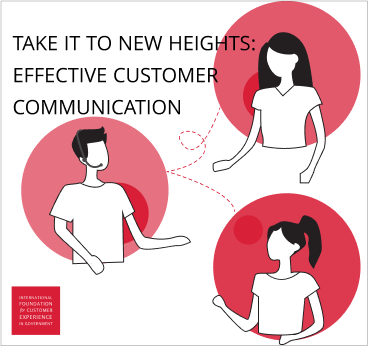
Published on July 21, 2023 | Reading Time: 5 mins
While organizations are rightfully directing their focus toward an exceptional customer experience within a customer-centric framework, there is often a hidden underlying truth that permeates all levels of the organization.
It can be expressed in a simple formula:

Happy employees = happy customers!

Therefore, to outwardly achieve positive organizational outcomes and garner the satisfaction of customers, entities must equally look inward to ensure a positive experience for their own employees.
Employee engagement is therefore the level of enthusiasm and dedication someone feels over their job.
This has been a central area of focus for managers and organizational psychologists alike, culminating in a few implementable principles to ensure the upkeep of organizational health and positive engagement of employees in their day-to-day job tasks.
1. Recruit the right people
The basis for cultivating a positive work environment is ensuring that hired employees are a good fit into the team, organizational tasks, and broader organizational culture. This can be ensured through several considerations:
- Standardizing the skills and attributes of new hires with management.
- Assessing the organizational culture.
- Using tailored competency frameworks in the hiring process.
- Employing psychometric assessments to determine person-organization fit.
2. Ensure a clear understanding
Sometimes lack of engagement comes from a simple reason.
Employees may not have a clear understanding of their job task or even how they fit into a particular project of the company at large.
It is important to cultivate a sense of community and clarify how each individual’s role fits into greater tasks and the mission of the company.
It can also be helpful to establish a reliable mentorship structure that allows employees to clarify any smaller scale queries should they arise.
3. Aid retention of employees
Ensuring employees are satisfied with their day-to-day job has a lot to do with the level of autonomy they experience when performing their professional duties.
An intrusive and overly controlling management style is likely to cause a loss of motivation and engagement with the job.
Cultivating an autonomous work environment can involve:
- Periodically asking employees about their input regarding their job or CX.
- Granting employees flexibility over their work schedule and execution of their job tasks.
- Providing the necessary tools and job resources for employees to execute their job tasks.
- Building trust between employees and management.
4. Training and personal development
Continuous personal development is an integral part of employees’ personal and professional growth. It is important to ensure they are continually learning and developing in their profession to not only maintain performance but also prevent feelings of stagnation. It is advisable that employees establish personalized learning and development goals with their manager at the beginning of each year that are monitored each quarter.
Training can involve:
- Traditional “classroom” activities and learning.
- Peer-to-peer learning initiatives.
- Online courses.
- Microlearning through specialized platforms.
- Manager/supervisor mentoring.
- Speaker events.
- Informal activities.
5. Rewarding positive behavior
The previously mentioned evaluation sessions can also serve as an objective measure of performance and achievements. This is an opportunity to give individual attention and reward exceptional performance and employee commitment to their role. It may also be beneficial to develop an official reward scheme for achieving particular targets or performance/behavioral metrics. It is useful to note that formal recognition of accomplishments, including how they fit into the organization’s mission.
6. Listening to employees
Creating a positive and conductive work environment for employees relies on listening to their opinions, needs, and expectations. Effective leaderships pays good attention on what employees thin and acts according to the feedback. It is important to demonstrate that thoughts are taken on-board.
Some simple techniques to implement this include:
- Putting out anonymous suggestion boxes in the organization.
- Encouraging employees to give 1-1 feedback to managers during performance reviews.
- Having periodic surveys documenting employee experience.
- Organizing meetings dedicated to receiving collaborative feedback from employees.
Following these guidelines will allow you to add structures to support employee experience layer by layer, with each consideration enhancing employee well-being and engagement. Based on the current practices of the organization, you can mix and match these approaches for a more customized strategy. All in all, what these points have in common is in highlighting the importance of taking a holistic approach to service delivery in a way that considers all involved stakeholders.
Download "Employee Engagement - The Hidden Foundation of Customer Experience"
Send download link to:




